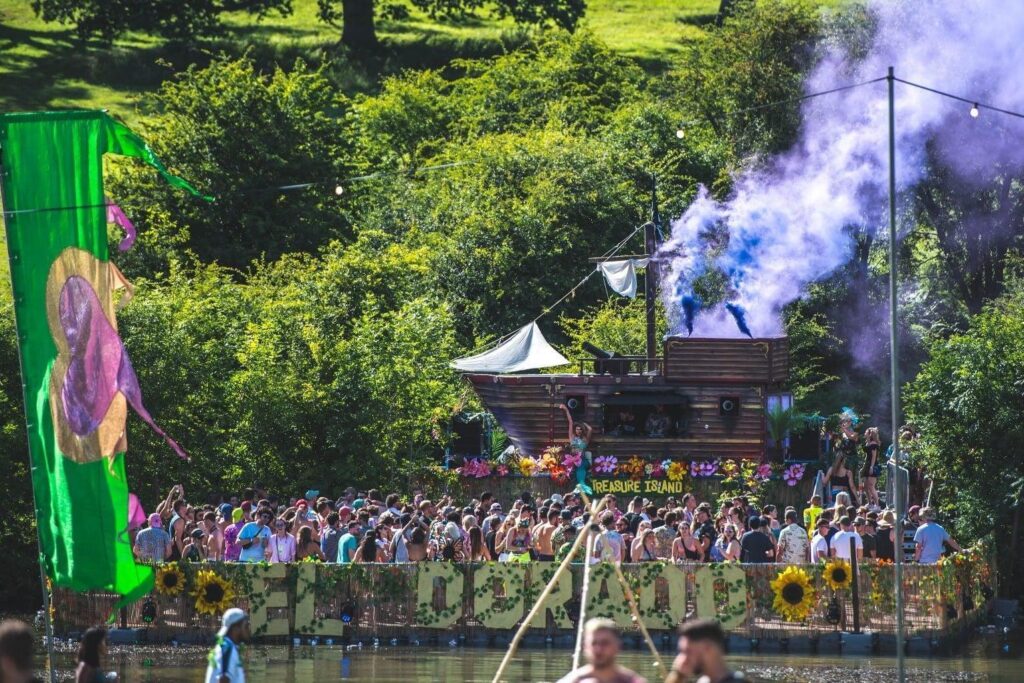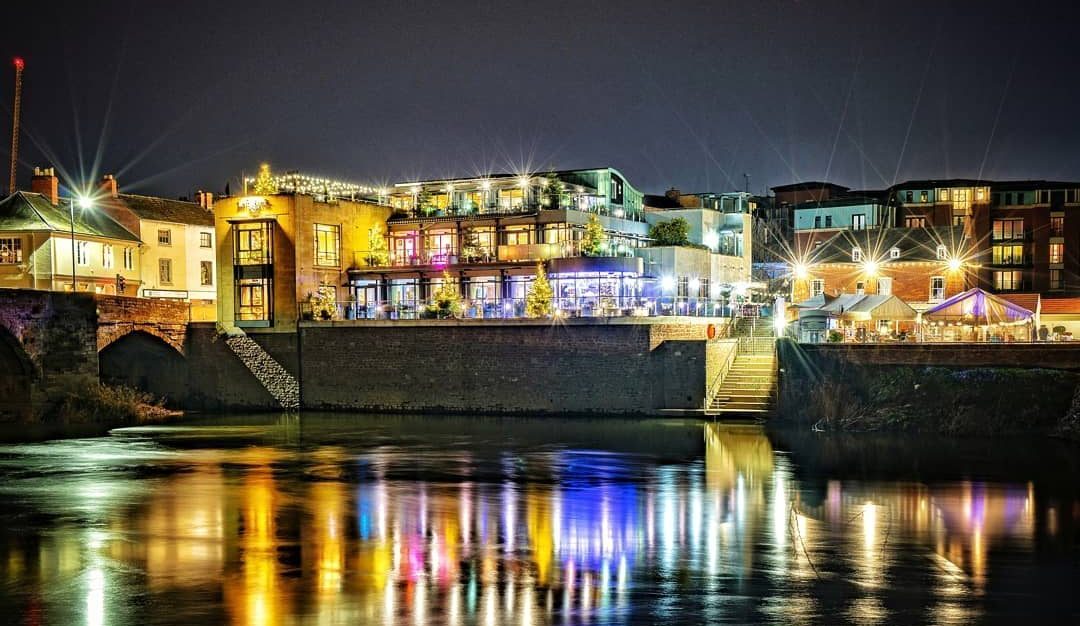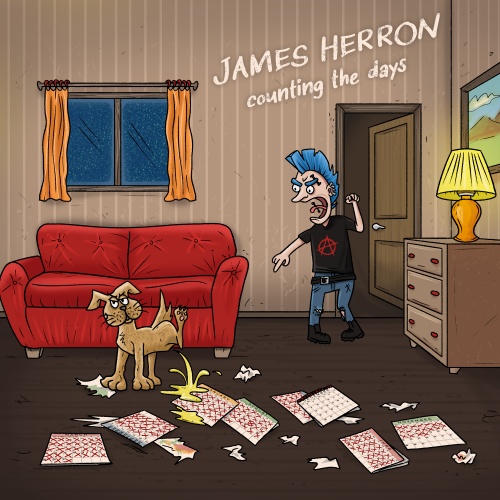Hereford and its satellite towns have a rooted cultural identity in music with an extensive and inspiring music history that can oftentimes be overlooked or undervalued. When discussing the particulars of music in the county, either as a component of heritage or in a more contemporary sense, the specifics are typically buried as a subheading somewhere within a broader discussion of ‘Culture & Tourism’. It can be argued however that music and its ecology is crucial to the Herefordshire story, not only in terms of cultural and community perception but also in supporting and enhancing the wider economy of Herefordshire, so much so that music deserves its own focus. Live music festivals specifically have been a significant part of Herefordshire’s music legacy for centuries and a powerful argument could be made for how crucial their presence is to the future of the music ecology and cross-industry economy in Herefordshire. When considering festivals though, the vital importance of sustainable dedicated live music venues in the county should not be neglected either.
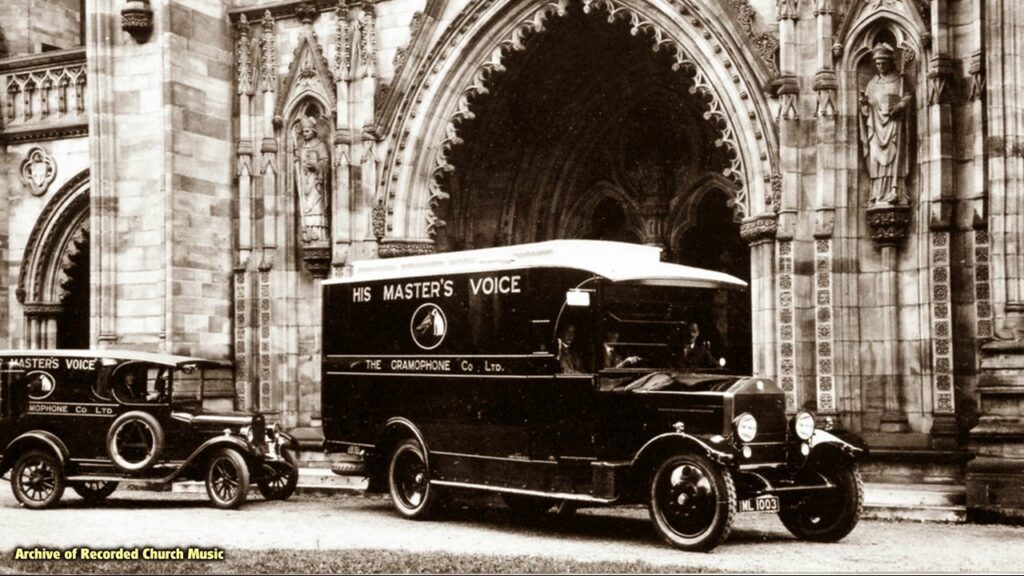
Once every three years, Herefordshire is home to The Three Choirs Festival, an annual celebration of classical and orchestral music in the counties of Herefordshire, Worcestershire and Gloucestershire. The Three Choirs Festival is the longest-running non-competitive music festival in the world and has for hundreds of years been a driving force in tourism and cross-industry economic progression within Herefordshire. Triennially, this gathering of music enthusiasts brings with it a wealth of new customers to a multitude of businesses within Hereford that otherwise may not have had the opportunity to visit the city. Attendees of the historic festival would contribute to the Herefordshire economy during their time in the county by sharing pints of ale and cider at local pubs from local breweries, purchasing crafts and souvenirs from local makers and shops, staying at hotels and inns dotted about the city and the countryside and would pay local chauffeurs to transport them around the area. This intersection of professions and industries and the way in which they all receive business support from the presence of music and the Three Choirs Festival is even more prevalent today, with many of the same types of modernised businesses seeing an increase in trade as a direct result not only of the Three Choirs but contemporary music festivals held in the county such as Nozstock and Lakefest.
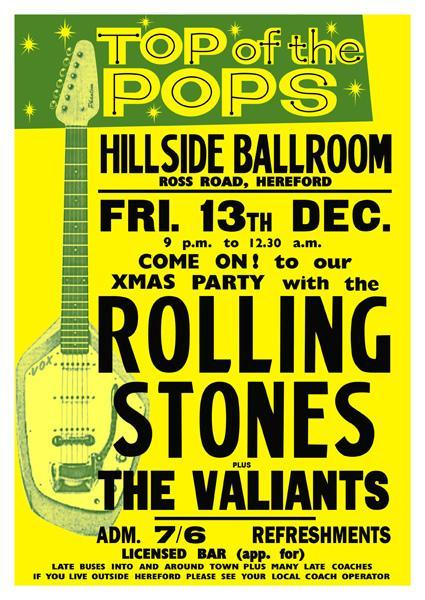
While classical, ecclesiastic compositions and performances are deeply wired within Herefordshire’s music identity, both historically and today, those lucky enough to have experienced the county in the 1960s and 70s will testify for its renowned status as a music destination within the realms of secular rock and pop too. The Hillside Ballrooms, also known as The Flamingo Ballrooms and The Redhill Hostel, was an iconic and exemplary live music venue, centralising crowds from across the United Kingdom to experience performances from huge artists of the day, including The Rolling Stones and The Who. The presence of this venue with its subsequent loyal patronage and impassioned community would inspire countless musicians from Herefordshire and its surrounding areas to form groups who would go on to help further establish Hereford’s music reputation, including Mott the Hoople and The Pretenders. Other acts known to have performed at The Hostel include Showaddywaddy, Judas Priest, Slade, Deep Purple and Status Quo. It was said that you hadn’t ‘truly made it’ until you’d played the Hostel in Hereford. The Hostel wasn’t the only venue to put Hereford on the map, however, and many of those who attended performances at The Hostel will likely have nostalgic recollections of The Park Hall in Womelow, as well as upstairs at The Booth Hall in the city centre.
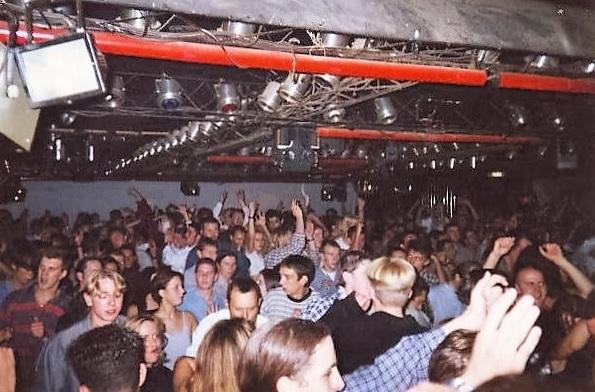
Some decades later, Herefordshire would once again become an epicentre for music lovers, renowned as the home of one of the UK’s most significant superclubs of the 90s, The Crystal Rooms. Located in the city centre on Bridge Street, The Crystal Rooms was sacred ground for dance enthusiasts and had a notable reputation for hard house, drum’n’bass, techno and acid house in particular, famously drawing in huge queues made up of attendees that had travelled from across South Wales, the West Midlands and the South West to visit the club specifically. A 2016 Hereford Times article reflecting on The Crystal Rooms notes that coach passengers arriving from Bristol, Birmingham and Wales would first visit bars in close proximity to the club prior to entry. The article highlights The Spread Eagle and The Orange Tree specifically and indicates that making a pre-drink stop to these places before the club opened would be an almost ritualistic element of the pilgrimage to Hereford’s superclub. When considering this specific example of how the reputation of a single music venue can enhance the performance of similar businesses surrounding it, the importance of a dynamic and engaging local music ecosystem starts to present itself. These fellow alcohol-serving establishments would not have been the sole beneficiaries of The Crystal Rooms’ success though and it can be sensibly assumed that public transport companies operating coaches, trains and taxis will have seen an increase in business on Naughty But Nice club nights too, as would local hotels, restaurants and shops in this instance of true destination ‘tourism’.
While an exciting and established music ecosystem can benefit the local economy by bringing new people into the county, it’s also paramount to the day-to-day lives and spending habits of localites too. It can be argued that music and hospitality venues in Hereford and its neighbouring towns are responsible for essentially all of the county’s night-time economy. When the nightclubs are open, thousands of jobs and professions are called into action. Bartenders, entertainers and DJs at the clubs themselves, bartenders and entertainers at other pubs/non-club venues, sound engineers, lighting engineers, security guards, chefs and waiters at restaurants (both take-aways and sit-ins), taxi drivers, bus drivers, hotel cleaners/housekeepers and receptionists, as well as produce manufacturers like beer and cider companies (for which Herefordshire is famously known for), will all see a large increase in demand over evenings and nights throughout the week and notably at the weekend. Thousands of night-time jobs exist solely because of the desire that people have to dance and consume music in a social context and by mapping all of the music-specific businesses that exist locally, an understanding and appreciation for the importance of music on Herefordshire’s economy can begin to be appreciated.
From looking at this map (still a work-in-progress and not fully exhaustive – please send me an email if I’ve missed a business), we can ascertain where the gaps are in the county’s music tapestry. For example, we can see that Herefordshire has a healthy abundance of magnificent music teachers and music schools, but very few recording studios or rehearsal rooms. Understandably, young and motivated musicians will look to leave the county in order to progress with their music career, due to lack of available resources beyond their initial lessons. We can also see that while there are a handful of pubs and venues who will lend their space, on occasion to live music (usually cover bands exclusively) – there are very few dedicated live music venues in the county at all, meaning those who wish to enjoy a night of music have very limited options and may, and often do, opt to travel to nearby cities where music has been given a bigger focus like Worcester, Cardiff, Birmingham or Bristol to enjoy a band or add more variety to their nightclub experience. This also means that local independent bands have fewer venues to practice and cut their teeth in.
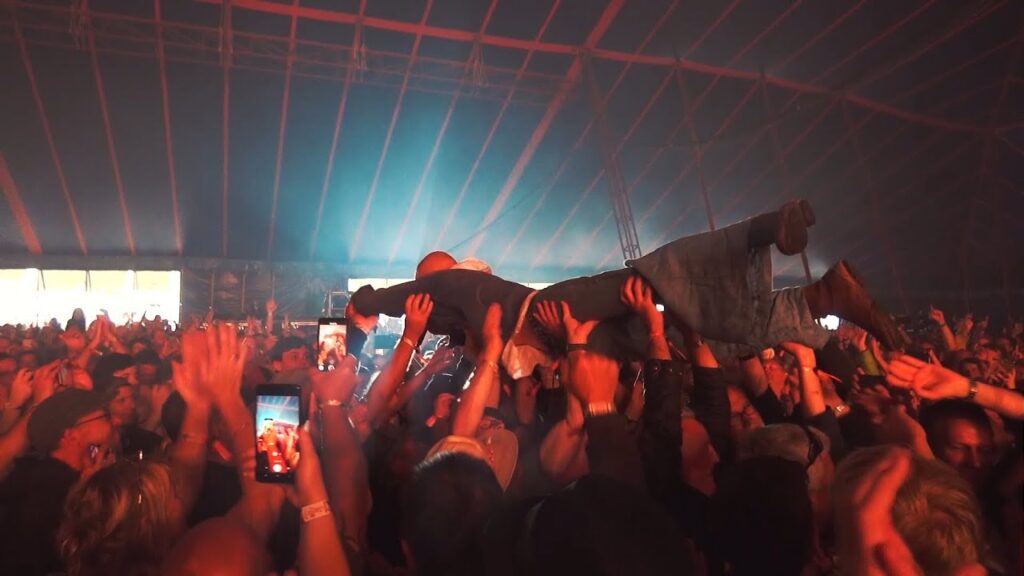
Herefordshire does, however, have some superior elements within the realm of the music economy, and in turn, has incredible potential to become a music county. From the same map, we can also see how prevalent live music festivals are in the county. Given the Herefordshire’s historic roots in the alcohol industry, the vast amount of beautiful and readily available countryside just a short drive from the city centre (and its bus and train stations), as well as the county’s geographic position of being ‘about an hour away’ from most populated areas in the South West, South Wales and West Midlands – Herefordshire has all of the potential to become the absolute capital of festival culture in the United Kingdom. Not only are the longer-standing festivals already present in the area receiving more and more attention and support from fans every year, but new festivals are sprouting up in farms and woodland areas at such a rate that it can feasibly be suggested that Herefordshire could one day soon have more live music festivals than live music venues, Andrew Marston of BBC Introducing Hereford & Worcester believes this could certainly be the case following the eventual end of the COVID-19 lockdown measures.
While the rising number of successful stand-alone-event festivals is generally a positive and exciting prospect, more needs to be done within the traditional music venue community in order to encapsulate and inspire local musicians and audiences and to exploit the opportunities that these festivals will continue to present. Some Herefordshire artists are managing to form careers and enjoy success today, and it’s in nurturing the local music ecology and environment that the county could encourage and facilitate more success stories. In recent years, Herefordshire’s most successful music export, Ellie Goulding, has publicly shown hometown love numerous times and continues to contribute to charity efforts in the county and has featured Herefordshire scenes in music videos. A new artist to watch is Weobley’s 220 Kid, an exciting producer, DJ and songwriter currently experiencing rising success with his single ‘Don’t Need Love’ featuring Gracey. At the time of writing, the song sits at almost 27 million streams and Spotify and has enjoyed three weeks in the top ten of the UK charts. While artists like these are a county-wide point of pride for locals, and so they should be, individual artists and their successes are not as crucial to the wider system as a strong music ecology foundation is; the presence of which would, in turn, inspire, develop and encourage future artists of the chart-topping calibre.

How do we help further develop Herefordshire as an every-day-of-the-week music county, without relying solely on the one-off events that make up festival culture?
We only have to look at our county neighbours of Worcestershire to see an exemplary method of forming a stronger local music community. The Worcester Music Festival, while still technically a music festival, is a huge collaborative effort of many pubs and clubs in the city who raise money for charity over three days in September through the energy and passion of live music. This instance of cross-business promotion and positive business competition has helped to ignite a massive music culture within the city, with many once sceptical pubs now catering to live music several times a week and enjoying the increase in business that these regular events bring. The Worcester Music Festival encourages people to leave their homes and experience multiple venues throughout the city, flowing through different businesses, spending at the bars as they go and making charitable donations too. In doing this, people who may not have ever had an inclination to try a new bar are now encouraged to do so and are more likely to pay another visit next time they’re in the area. By putting on live bands weekly, be it original independent acts or cover/tribute groups (or ideally, a combination of both), venues give people a more desirable reason to go into town and enjoy the evening with entertainment, rather than stay at home.
The higher number of live music venues putting on music every night, the more reason people have to experience the city as a whole rather than stay at home or drink for a short time at one pub or bar. Andrew Marston of BBC Introducing Hereford and Worcester (who is a Hereford resident) has concurring thoughts. When queried about what he thought the biggest hurdles for Herefordshire’s music community and economy might be, he said that it was in his opinion that venues in the county have become somewhat complacent with just opening the doors and expecting people to come in. The prominent marketing technique for venues in the county seems to be more about competing with each other on the food and drink prices to capture clientele from each other, rather than giving people who wouldn’t normally be in the city centre at all, a reason to actually go into town. Andrew believes that venues should look to work with each other collaboratively and to take a philosophy that most people don’t go into town on a night out to visit just one venue. Andrew says:
“What we’ve seen in similar markets like the Worcester Music Festival, which celebrated its tenth-anniversary last year, every single pub was doing the same [marketing their business by competing with others on price] and all hated the idea of putting a music festival on. We went to forty pubs and said ‘look, stick live music on’ and they said ‘well there’s not enough people to go round’ but actually what happened, with the power of marketing of forty pubs all saying ‘there’s some live music happening’, just that joint power, the police estimated an extra 10,000 people came out per day just for the Worcester Music Festival. In fact, what they had was three days of live music, so there might be six bands playing in a day, wall-to-wall, in every single venue so they’re able to get through three or four hundred bands and the result in the economy for that, was that actually it made so much noise that everyone in Worcester and its surrounding areas came in to see what it was all about”.
Andrew Marston, BBC Hereford & Worcester
Instead of trying to compete for the attention of people already in the area for a night out, it would be highly beneficial to the night-time economy of Herefordshire for venues to begin to work together in organising and promoting each other’s events and to actually stage these events themselves in order to get more people into the area as a whole.
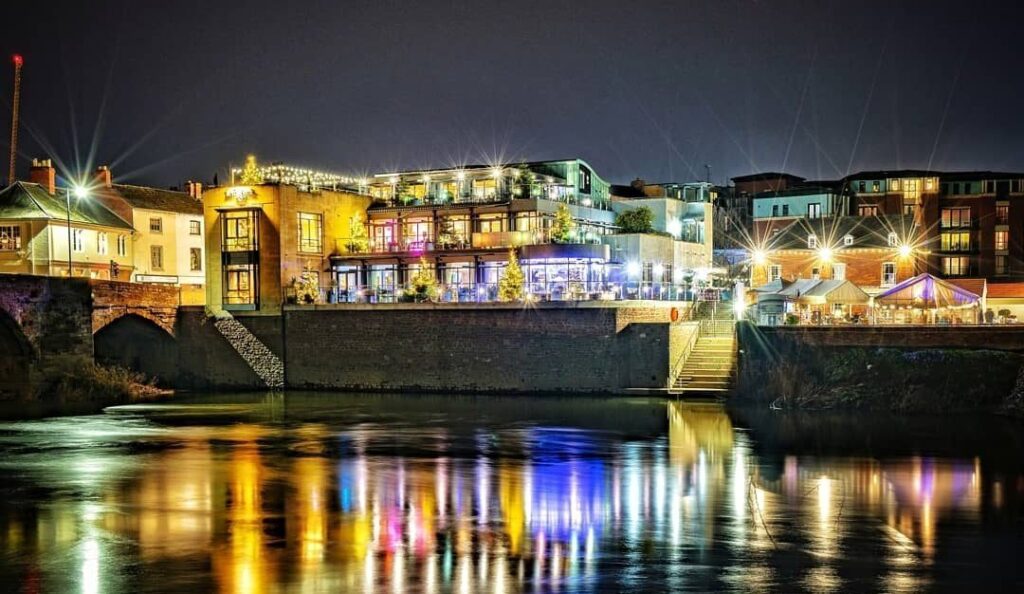
The responsibility is not solely on venues though and the general attitude to music as an essential economic factor of the county is somewhat lost on councils and governing boards too. This is not necessarily just a Herefordshire issue but in looking at Herefordshire specifically, music is neglected. Despite the number of music schools, studios, occasional and dedicated live music venues, classical music institutions, nightclubs, record shops, instrument shops, radio stations, PA hire companies and even a number of record labels and publishing companies in the county – music is not really recognised by any of the council’s economic publications and the importance that these businesses have on other businesses not directly relating to music is undervalued. The Herefordshire Local Plan Core Strategy document for 2011-2031 makes a single note of ‘enhancing the night-time economy’ in relation to non-strategic policies and proposals, but the word ‘music’ does not appear once in any capacity throughout the 186-page document. Herefordshire’s Cultural Strategy 2019-2029 document touches on music and does recognise the potential of live music festivals, but only in the rhetoric of destination tourism and nothing of the local nightlife or its potential is referenced. The Hereford Sustainable Destination Management Plan also briefly alludes to the county’s musical connections and largescale festivals but the document also highlights that the city itself is lacking in major tourism magnets.
It’s clear that Herefordshire has an exciting level of potential to become a music destination and thriving music county, across its city and neighbouring towns and perhaps with the rising success of festivals in the county might achieve this anyway. I would argue though, that the potential to become a thriving and desirable place for music lovers to live and visit is better achieved by supporting our local pubs in their live music ventures, as well as in local pubs and venues doing more to help eachother collaboratively with these efforts. In any case, the value and importance that music has in Herefordshire should not be underestimated and its potential to become a renowned music county is already heavily present and ready to be utilised, providing that this beautiful county can garnish the support of locals, the council and the collaborative efforts of venues to facilitate music.
